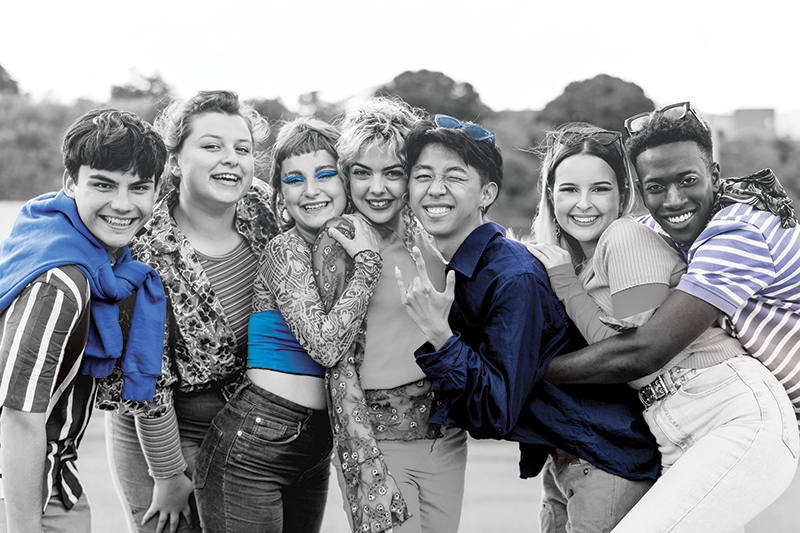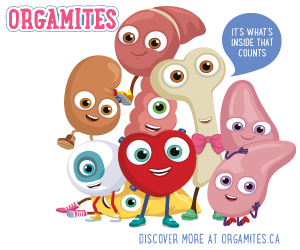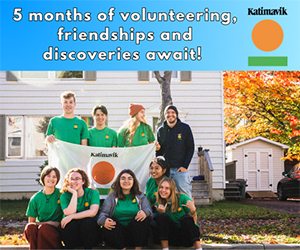A popular club at our school is the GSA (Gay Straight Alliance), facilitated by our Technology teacher, Ms Schol. The GSA is a student-run organization that unites LGBTQ+ and allied youth to build community and organize around issues impacting them in their schools and communities.1 (ref: gsanetwork.org). Our GSA runs Mondays after school and student engagement and turnout has steadily increased over the years. Ms Schol runs the club with such compassion and empathy; with heart and soul; it’s no wonder students gravitate to join the club, share their stories, talk about their challenges with family and peers, do great work in the community to build awareness and outreach, and become allies.
Our students connect with Ms Schol in a way many of them are not able to connect with other adults in their lives. You see, Ms Schol is not only a fantastic educator, kind and compassionate GSA leader, she is an amazing mother to her transgendered child. When I sat down to speak with Ms Schol about her experience running the GSA, she naturally spoke about her own child, Kai and their journey. As a mom, she is very open and accepting of Kai. As a fellow colleague, I see the love she has for all our students – it radiates through her. In our discussion, Ms Schol spoke of our students’ experiences with their own parents and juxtaposed them with how she and her husband are learning and guiding their own transgender son. It is evident to me that it is important to Ms Schol that our students have an ally and safe adults and spaces within our school; she does not want any child to feel like they are alone. Ms Schol approaches our students and her own children from a place of hope and acceptance.
In our discussion, Ms Schol described to me a lot of what our students are experiencing, starting with social transitions and deadnames. The social transition for a child who identifies as transgender, includes doing everything except for medical procedures. Social transition entails the process of changing your gender expression to the gender that you feel you are. This may be a slow progression over time; wearing clothes, change their hair, name. For Ms Schol’s child, Kai, they started out as dressing as a boy, and consequently, realized how much they liked being mistaken for a boy. This began for Kai at the age of 5. However, social transition also includes transgender children selecting a name that the child feels reflects their identity more. Many students going through the social transition will give us in Guidance, their preferred name. We honour that name by using it in class, when we speak with them, staff and their parents, having it in our system so it shows up on their timetable. Once a student selects a preferred name, the name given to them by their parents at birth is referred to as their deadname.
One of Ms Schol’s GSA members, grade 12 student, Tyler is a transgender male. His pronouns are he/they. He is slowly moving through his social transition. Tyler’s journey is quite different compared to Kai’s. From a young age, Tyler always knew he wanted to be a boy. But it wasn’t until Covid, when Tyler was in Grade 10, that he started connecting with some friends who were transgender. In gr 10, during Covid, Tyler didn’t know anything about identity. He befriended peers who were part of an LGBTQ+ virtual group. At that time, Tyler identified as CIS gender. As he talked to these trans friends, Tyler realized that he shared many characteristics with them. The first step in the social transition piece that Tyler took was to change his pronouns. Tyler wanted all pronouns used, he/she/they. But by the end of Grade 10, Tyler realized he was no longer comfortable with the pronouns she/her. Tyler’s pronouns became he/they. Tyler’s friends helped him with this process as they were accepting and supportive.
Many of our transgendered youth are met with adults and peers that have strong opinions about their process. Ms Schol, an advocate, and ally, reminds them and all of us that it is not appropriate to ever as an adult engage in a discussion with a student concerning the student’s body or their choices. This is a complicated time in a child’s life and what is needed from their peers and adults around them is support, understanding, compassion, not judgment.
For Ms Schol’s child, she and her husband noticed that Kai was curious about gender. Between SK and Grade 1, Kai began having tantrums and some of these tantrums took Kai to dark places, asking questions such as Why am I living? Why am I here? As Ms Schol and her husband learned about gender identity exploration, this was developmentally appropriate. Due to Kai’s attention issues, they were sent for a psychological assessment and the results showed that Kai is highly gifted. For Ms Schol and her husband, this result made sense as they knew that Kai feels everything very deeply and is quite introspective. In grade 1, Kai decided they weren’t going to wear dresses any longer. Kai was allowed to wear whatever they wanted. In Grade 2, Kai started cutting their hair. When Kai decided on super short hair, they started getting mistaken for a boy. From there the pace of the social transition picked up. Somewhere between Grade’s 2 and 3, Kai declared they were queer and in Grade 4, Kai came out to their classmates and extended family as non-binary. They started using their new name (a short form of their birth name) and started using the pronouns they/them. Kai’s teachers and peers were accepting as were Kai’s parents. This past September, Kai started grade 6 in a gifted program at a new school and used the opportunity to switch to using he/him pronouns and be known as a boy rather than non-binary. He has also requested that his identify as a transgender boy be kept confidential so he can oversee when or if he decides to share. Although his deadname was used on the attendance on the first day because information wasn’t shared between the admin and his teacher, the start of the school year has been going smoothly. Kai feels respected and supported and has met other LGBTQ+ peers.
Juxtaposed with Tyler’s experience: In Grade 11, Tyler started using his preferred name. At that time, Tyler mustered up the courage to tell his older sister that he was a transgendered male and received a positive reaction from her, which was a huge relief for Tyler. Just this year, in grade 12, Tyler’s parents have also started using his preferred name. His parents are fine with the name change although they do not understand currently that Tyler is transgender. This past summer, Tyler’s parents starting using his preferred name when talking with extended family. Tyler said that his aunts/uncles were critical and teased him about his name. Tyler is worried about his extended family’s reaction as they have extreme beliefs. To protect himself, Tyler is slowly moving through his social transition and has just after years of hesitating, cut his hair short. This is a big step for Tyler who wanted to present as less feminine. When I sat down with Tyler, he told me that society sees hair as so important. Tyler hated when people commented about his long, beautiful hair. By cutting his hair, he was able to take control this part of his identity.
As evidenced, Kai and Tyler’s experiences and journeys are quite different.
It truly is our calling in Guidance, in support services, in education, and as parents and community members to meet our transgender youth with open hearts and compassion. Growing up brings many challenges. Being a transgender youth adds additional significant layers. We can choose the path of hope and support, as demonstrated and lived by as Ms Schol or fall short by our transgender students who are vulnerable in their journey to become who they know they are. I will leave you with Ms Schol’s mantra: you are in charge of who you are. She tells the members of the GSA as well as her own child, Kai, this mantra and wants all our students to feel like they have the autonomy and support to develop into healthy, well adjusted, contributing members of society, recognizing that their identity is a significant contributor to that. You are in charge of who you are!
By: Anna Macri
References
1www. gsanetwork.org









